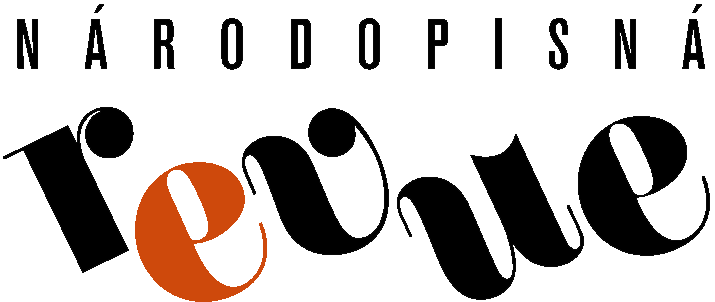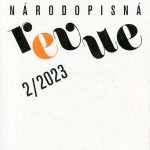Studies on the Subject of “Everyday Culture in the 16th–19th Centuries”
Pious Pilgrimages to the Virgin Mary of Chlum in the Life of People of the Baroque Period (Markéta Holubová)
Treasure Books in Moravia in the 18th and 19th Centuries: An Analysis of Spell Texts (Anna Grůzová)
Black Shirt: An (Un)Known Garment Worn by Mountain Shepherds in the Western Carpathians (Václav Michalička)
The Success Rate and Most Frequent Mistakes of Journeymen at Master Tailor Examination in the 17th and 18th Centuries on the Example of the Guild of Tailors in Česká Kamenice (Josef Svoboda)
Guild Tailors at the Pardubice Manor in the 16th Century and the Intergenerational Transfer of Their Production Experience (Martin Šimša)
For all content click the button CONTENTS.
Pious Pilgrimages to the Virgin Mary of Chlum in the Life of People of the Baroque Period
Markéta Holubová
The culture associated with pilgrimage sites was undoubtedly one of the most significant phenomena of spiritual life in the Czech lands in the seventeenth and eighteenth centuries. On the basis of a thorough excerpt of official sources and hand-written or printed miraculous answers of the Virgin Mary of Chlum from 1651–1768, the study reflects pious pilgrimages to Chlum Svaté Máří (translated as St. Mary’s Wooded Hillock - TN) during the Baroque period. Pilgrimages were pious journeys to a particular destination, the purpose of which was to ask for a blessing or to give thanks for received grace. They were an indisputable mean of re-catholicisation, which was supposed to strengthen the faithful inwardly and gift them with spiritual graces for their penitent deeds, among which pilgrimages were rightly included. Large gatherings of the faithful increased the sense of belonging together, deepened the awareness of ecclesial community and imprinted an indelible experience on the souls of the participants for along time. The frequency of pilgrimages depended on the liturgical calendar, the weather, and the course of farm works in a particular year. Miraculous healings of the pilgrims were an important impetus to undertake the pious journey to the worshipped Madonna in Chlum Svaté Máří.
Treasure Books in Moravia in the 18th and 19th Centuries: An Analysis of Spell Texts
Anna Grůzová
Texts using magical practices formed an important part of everyday life, especially for the lower classes of society in the 18th and 19th centuries. Spellbooks straddle the boundary between prayer (i.e. a permitted expression) and magic (i.e. a not permitted expression). The text of a manuscript book often changed with the person of the scribe. The analysis of the different phases of the search has shown the variety of treasure texts content, which is usually not defined by the magical means used, the localization, the scribe, the subject, or the title. Nor do similar types of books show similarities: texts addressing the same saint (e.g. Saint Christopher books), texts following a similar theme (so-called edvartky), texts from the pen of the same author, or texts using the same “search” means. The text schematization is only manifested in the basic parameters, i.e. the search for treasure through establishing a relationship with otherworldly entities using various means. However, the texts make abundant use of fundamental aspects of traditional religiosity and belief in God. Thus, despite the presence of incantations and other practices, the treasure books are a manifestation of pious behaviour affirming man´s submission to the divine destiny.
Black Shirt: An (Un)Known Garment Worn by Mountain Shepherds in the Western Carpathians
Václav Michalička
The study focusses on black shirts, soaked with animal fat and smoked, worn by Carpathian shepherds in the 17th-19th centuries. The author focuses on sources from the area of the present-day Czech Republic, taking into consideration the wider context of the use of this garment also in the area of the present-day Poland and Slovakia. The chosen theme has been dealt with based on the study of period sources and professional literature as well as on a series of experiments aimed at the technique of making this shirt and at practical issues related to its common use. The functionality of this garment, which featured a special treatment - impregnation with animal fat and smoking - is addressed as well. Due to this treatment, the shirt was more resistant to moisture, cold, wind, and insects. The study also presents results of experimental research which explains the process of making the black shirts, confronting their real properties with historical records. In the conclusion, the author points out the pitfalls of experimental verification due to the unfamiliarity with detailed procedures and production customs, and opens up the possibility of further laboratory research in collaboration with technical disciplines.
The Success Rate and Most Frequent Mistakes of Journeymen at Master Tailor Examination in the 17th and 18th Centuries on the Example of the Guild of Tailors in Česká Kamenice
Josef Svoboda
The protocols recording the course of master examinations are a unique source to understand guild issues, yet historical and ethnological research has not paid much attention to them. From the environment of tailor guilds in the Czech lands, three quite large sets of these protocols were found; these were conceived as books in the cities of Aš, Krnov, and Česká Kamenice. While the first two books contain brief protocols that do not allow for a too deep insight into the course of the examination, the one from Česká Kamenice is unique in terms of its thorough nature and connection to other and similarly rare sources (the book of patterns), and it offers a detailed insight into the course and complexity of the tailors’ master examination. When analysing mistakes mentioned in the case of presented garments, we can imagine the demanding character of particular master pieces, when some of them were beyond the abilities of four of the five journeymen tested. The frequently repeated mistakes indicate insufficient preparation and the inability of journeymen to access drawing and measuring of cuts - the greatest secrets of master tailors. The conclusion of the treatise raises the question of the success rate of master and non-master sons, whereby the limited sample of tailors from Česká Kamenice demonstrates that the second group was more successful during the examination.
Guild Tailors at the Pardubice Manor in the 16th Century and the Intergenerational Transfer of Their Production Experience
Martin Šimša
The producers of garments and the intergenerational transfer of their experience were always among important tools to mediate new clothing trends and innovations. Based on the quantitative research into archival sources from the 16th century, the study tries to outline basic contours of this process, and - using several quantitative examples from the Pardubice manor - present their participants. In the region under study, tailors settled mainly in the city of Pardubice, and in small towns of Sezemice, Dašice, Přelouč, Bohdaneč, and Holice. However, individual masters also worked in several villages. Tailors formed a diverse social structure that included owners of city houses, farmers, gardeners, and poor farm hands living in rented rooms. Many parents considered apprenticeship to be a suitable way of securing the future for their children. In addition to quite a small group of young men from tailor families, it was primarily children from gardener and farmer families whose inheritance shares helped them to pay high costs associated with the apprenticeship and the subsequent journey. The employment prospects of the newly trained tailors are as yet unclear. While the sons from tailor families mostly joined the trade easily, for the others we know only that they farmed on one of the farmsteads, but there is no evidence that they operated the tailoring trade.



